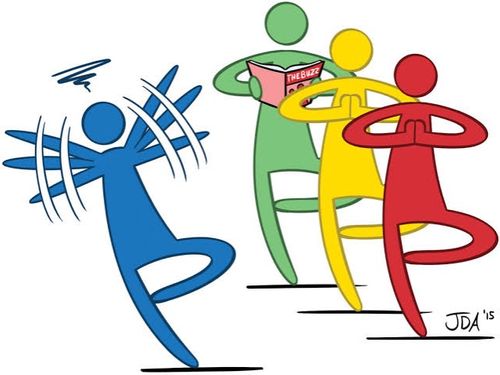The See-Saw Principle
Jan 25, 2022 · 2 mins read
0
Share

Susan David, author of Emotional Agility, talks about finding the equilibrium between over-competence on the one hand and over-challenge on the other. She calls this — The See-Saw Principle.
Save
Share
It is about living at the edge of our ability. It means finding the place in life in which comfort of the familiar exists in a kind of creative tension with the excitement and stress of the unknown.
Save
Share
The curse of comfort : If something feels comfortable – as in familiar, accessible and coherent – our brains signal that we’re just fine where we are. And if something feels new, difficult or even slightly incoherent, fear kicks in.
Save
Share
Our bias in favour of the familiar and the accessible can even influence what we accept as the truth: we give more credence to opinions that appear to be widely held. Information that challenges familiar views can feel disorienting, even when the disconfirmation is positive.
Save
Share
Choosing challenge: To stay truly alive we need to choose courage over comfort so that we keep growing and challenging ourselves. But, according to the See-Saw Principle, we also don’t want to be overwhelmed by taking on unrealistic goals.
Save
Share
Staying ‘whelmed’: The best term to describe living at the edge of our ability, being challenged but not overwhelmed, is simply ‘whelmed’. And a key part of being whelmed lies in being selective in our commitments, which means taking on the challenges that align with our values.
Save
Share
We can stay ‘whelmed’ in two ways: expanding our ‘breadth’ (what we do – the skills we acquire, the topics we talk about, the avenues we explore) as well as our ‘depth’ (how well we do what we do – the quality of our listening, our level of engagement with the world).
Save
Share
Grit versus Quit: We should be gritty, yes, but not stupid. The most agile and adaptive response to an unattainable goal is goal adjustment, which entails both disengaging from the unattainable goal and then re-engaging in an alternative.
Save
Share
In trying to balance the ‘grit-versus-quit’ equation, the economist Stephen J. Dubner compares two things: the sunk cost and the opportunity cost. If you can take a step back and stop fretting about sunk costs, you can better assess whether you still want to invest more efforts.
Save
Share
Emotional agility is about getting on with life. It involves moving towards clear, challenging, yet achievable goals that you pursue not because you think you have to, or because you’ve been told to, but because you want to, because they’re important to you.
Save
Share
0